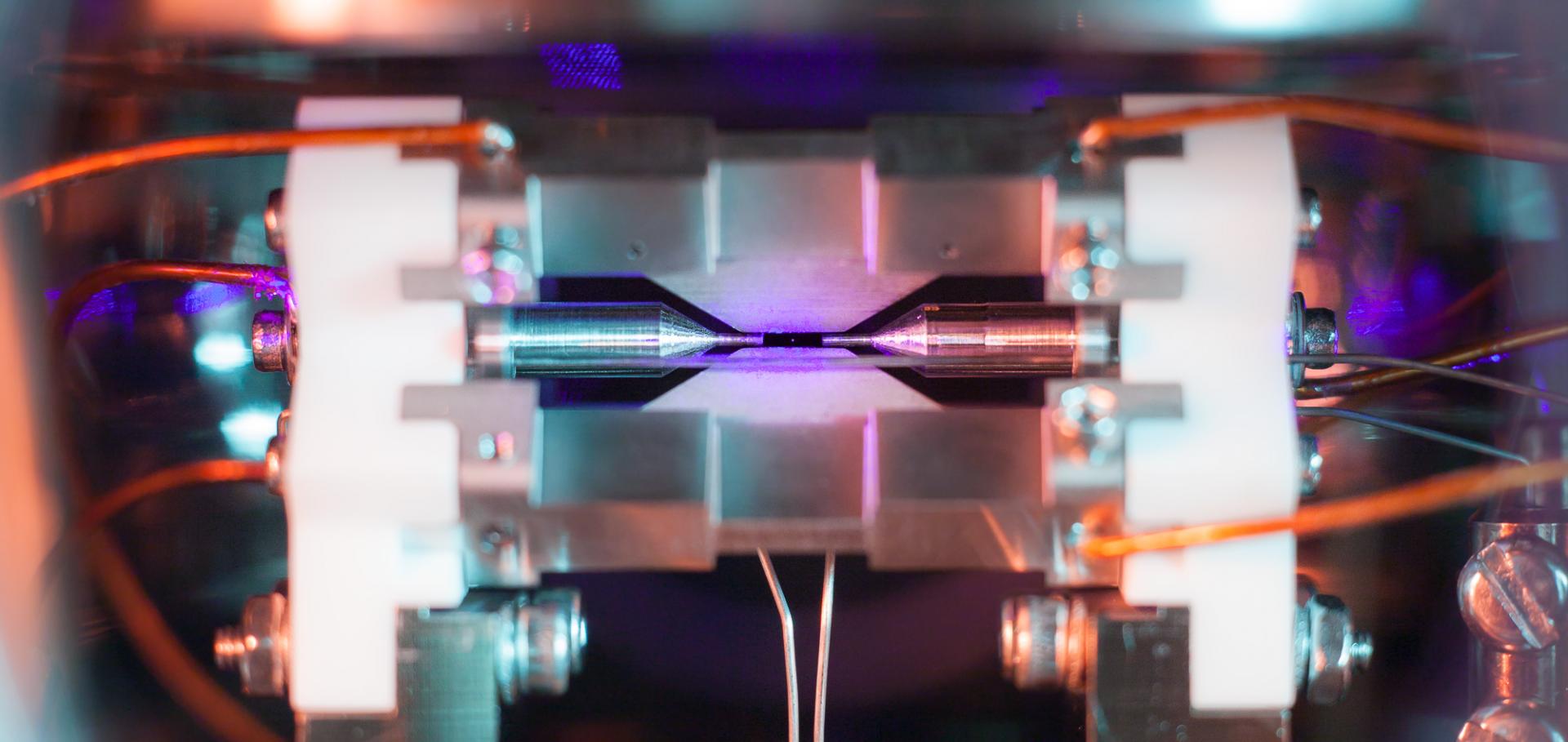High-fidelity spatial and polarization addressing of 43Ca+ qubits using near-field microwave control
Physical Review A American Physical Society 95:2 (2017) 022337
Abstract:
Individual addressing of qubits is essential for scalable quantum computation. Spatial addressing allows unlimited numbers of qubits to share the same frequency, whilst enabling arbitrary parallel operations. We demonstrate addressing of long-lived $^{43}\text{Ca}^+$ "atomic clock" qubits held in separate zones ($960\mu$m apart) of a microfabricated surface trap with integrated microwave electrodes. Such zones could form part of a "quantum CCD" architecture for a large-scale quantum information processor. By coherently cancelling the microwave field in one zone we measure a ratio of Rabi frequencies between addressed and non-addressed qubits of up to 1400, from which we calculate a spin-flip probability on the qubit transition of the non-addressed ion of $1.3\times 10^{-6}$. Off-resonant excitation then becomes the dominant error process, at around $5 \times 10^{-3}$. It can be prevented either by working at higher magnetic field, or by polarization control of the microwave field. We implement polarization control with error $2 \times 10^{-5}$, which would suffice to suppress off-resonant excitation to the $\sim 10^{-9}$ level if combined with spatial addressing. Such polarization control could also enable fast microwave operations.High-fidelity elementary qubit operations with trapped ions
Optica Publishing Group (2017) qw6a.1
High-Fidelity Trapped-Ion Quantum Logic Using Near-Field Microwaves.
Physical review letters 117:14 (2016) 140501-140501
Abstract:
We demonstrate a two-qubit logic gate driven by near-field microwaves in a room-temperature microfabricated surface ion trap. We introduce a dynamically decoupled gate method, which stabilizes the qubits against fluctuating energy shifts and avoids the need to null the microwave field. We use the gate to produce a Bell state with fidelity 99.7(1)%, after accounting for state preparation and measurement errors. The gate is applied directly to ^{43}Ca^{+} hyperfine "atomic clock" qubits (coherence time T_{2}^{*}≈50 s) using the oscillating magnetic field gradient produced by an integrated microwave electrode.High-fidelity trapped-ion quantum logic using near-field microwaves
(2016)
High-fidelity quantum logic gates using trapped-ion hyperfine qubits
Physical Review Letters American Physical Society 117:6 (2016) 060504


